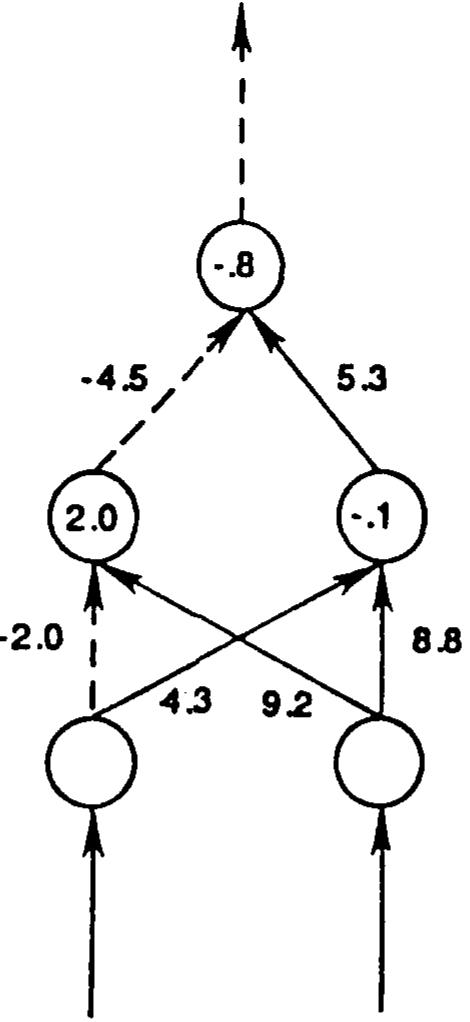Figure 17 – uploaded by David Alejandro

Figure 12 The solution discovered for the negation problem. The right-most unit is the negation unit. The prob- lem has been reduced and solved as three exclusive-ors between the negation unit and each of the other three units. Most of the problems discussed so far (except the symmetry problem) are rather abstract mathematical problems. We now tum to a more geometric problem—that of discriminating between a 7 and a C—independent of translation and rotation. Figure 13 shows the stimulus patterns used in these experiments. Note, these patterns are each made of five squares and differ from one another by a single square. Moreover, as Minsky and Papert (1969) point out, when considering the set of patterns over all possible translations and rotations (of 90°, 180°, and 270°), the patterns do not differ in the set of distances among their pairs of squares. To see a difference between the sets of patterns one must look, at least, at configurations of tri-
Related Figures (28)




























Connect with 287M+ leading minds in your field
Discover breakthrough research and expand your academic network
Join for free